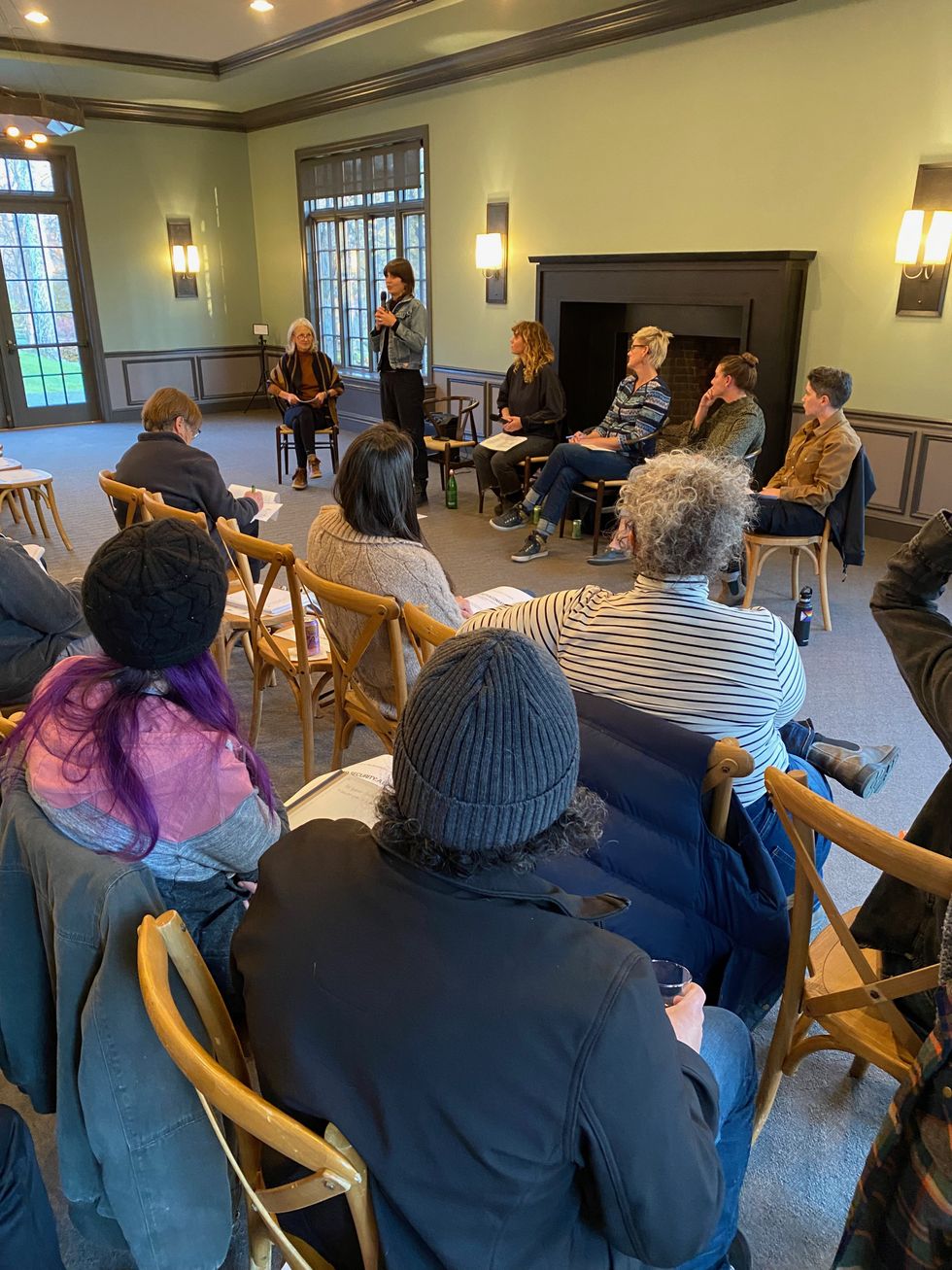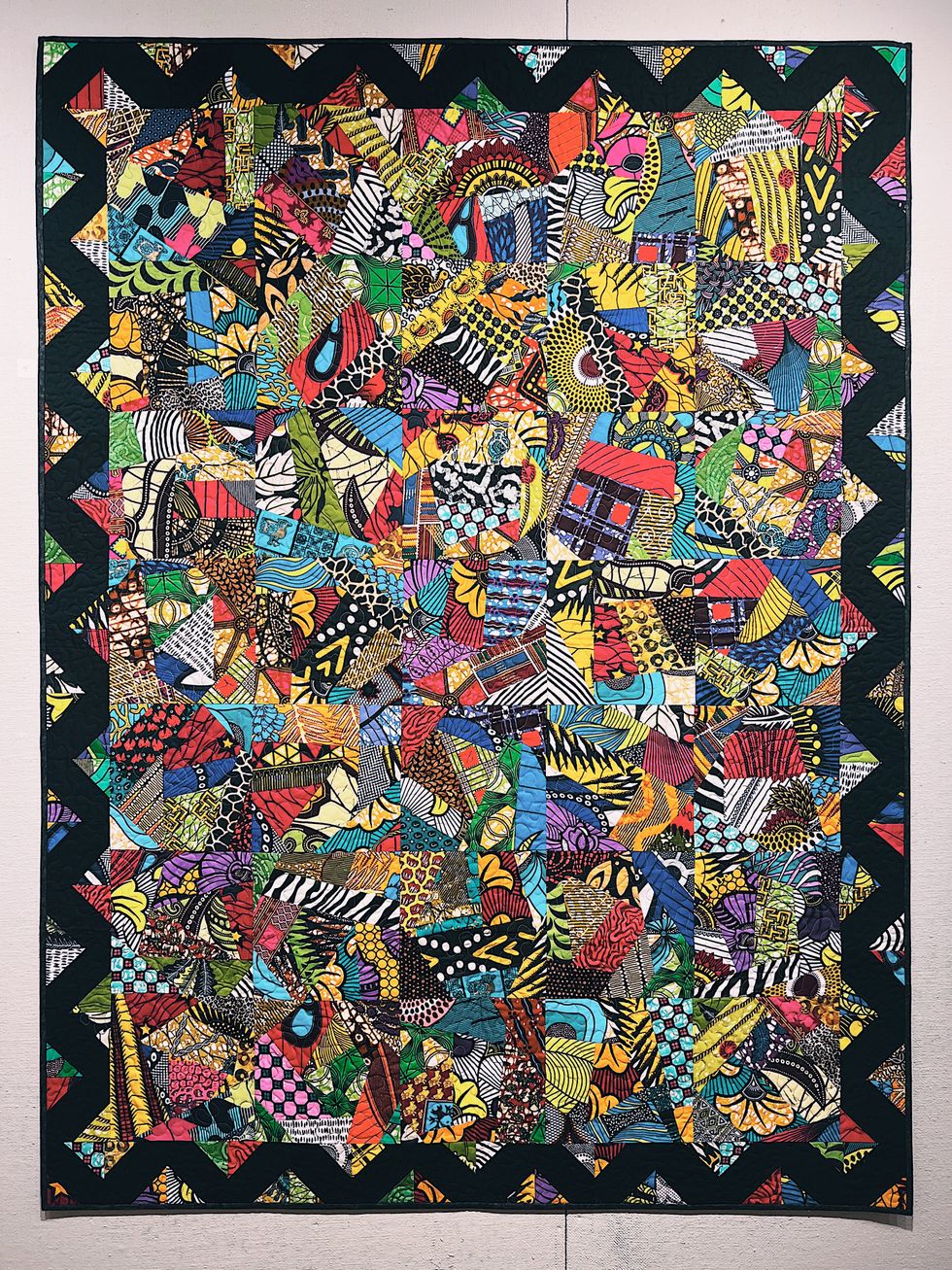AMENIA — That food security is not a question of having enough food, but of ensuring that all individuals and households have safe, consistent access to that food was the premise of “Food Security: A Conversation,” a panel hosted at Troutbeck on Sunday, Nov. 5, and attended by over 100 residents of the tristate region.
Food insecurity within the population has remained steady for the past 25 years, said Linda Quella, founder of Tri Corner Food Equity, who organized and moderated the event.
Creating resilient and sustainable access to quality food across populations, she said, requires a reexamination of the ways that food is grown, distributed and accessed throughout the region.
Typically, organic, sustainable farming practices require more labor, resulting in higher food costs; ultimately, said Quella, higher-quality produce is often inaccessible to most of the community.
The question becomes one of getting quality food to those who typically can’t afford it, and get farmers a fair return.
Representatives of local networks of food pantries, warehouses, and farms made up the panel.
Jordan Schmidt, Food Program Director at The North East Community Center (NECC), in Millerton, raised the issue of fair pricing in her discussion of NECC’s fresh food pantry, which delivers a variety of fresh, locally produced vegetables, milk, eggs and proteins to food-insecure residents.
The program not only makes it possible for low income households to obtain fresh, nutritious food that they might not be able to afford, she said, but it also enables several small participating farms to increase their production and sales.
Getting food directly from farms into the food pantry system demands a shift from transactional to relational system of exchange, said Quella. Sarah Salem, founder and director of Hudson Valley Food Systems Coalition, emphasized the importance of fostering connectivity and trust.
Renee Giroux, manager of the Northwest Connecticut Food Hub, said that food hubs can assist in resolving logistics and distribution issues faced by farmers, as well as ensure fair prices for their food. One of her goals is getting locally farmed food into schools in the Northwest Corner, she said.
Maggie Cheney, farmer and co-founder of cooperative Rock Steady Farm in Millerton, described how the farm’s partnerships with food pantries and health centers suggest a model that supports diversity and inclusivity within the local food ecosystem. Cheney said that Rock Steady’s commitment to diversity extends to both farm workers and crops, and ultimately makes both the operation and the output of the farm more resilient.
Sarah Chase, farmer and owner of Chaseholm Farm, Schmidt, and Cheney all emphasized the importance of asking the community how to make food access easier in their day to day lives as a way of understanding where and how resources are best distributed.
In particular, panelists emphasized the importance of mitigating the lack of affordable housing.
“We don’t have food if we don’t have farmers,” Quella said.
“Housing insecurity is connected to everything else,” said Cheney.
That everything is connected to everything else was perhaps the forum’s central message. Panelists made it clear that improvements across housing, transportation, healthcare and environmental sustainability are all critical to addressing food access.
They also emphasized the need for collaboration between farmers, community organizations, and government entities. System-wide improvement can only be implemented with system-wide participation, they said.
The Hotchkiss Library plans to continue the series of community conversations on food security, the next such forum scheduled to occur in January, 2024. The panel was sponsored by the new Guild chapter at Hotchkiss Library of Sharon.










 A quilt by Litchfield-based artist Karen Griska.Alexander Wilburn
A quilt by Litchfield-based artist Karen Griska.Alexander Wilburn



